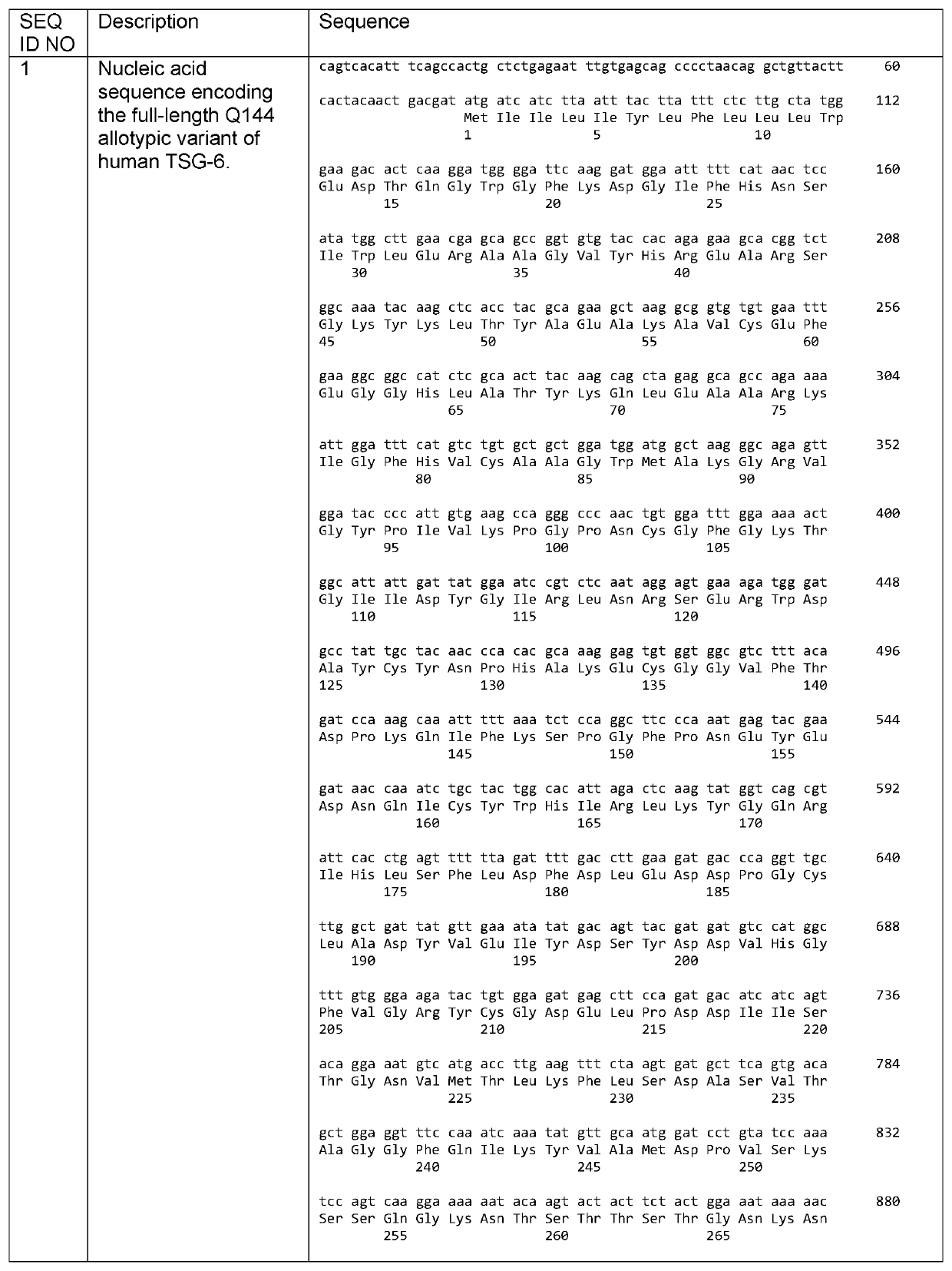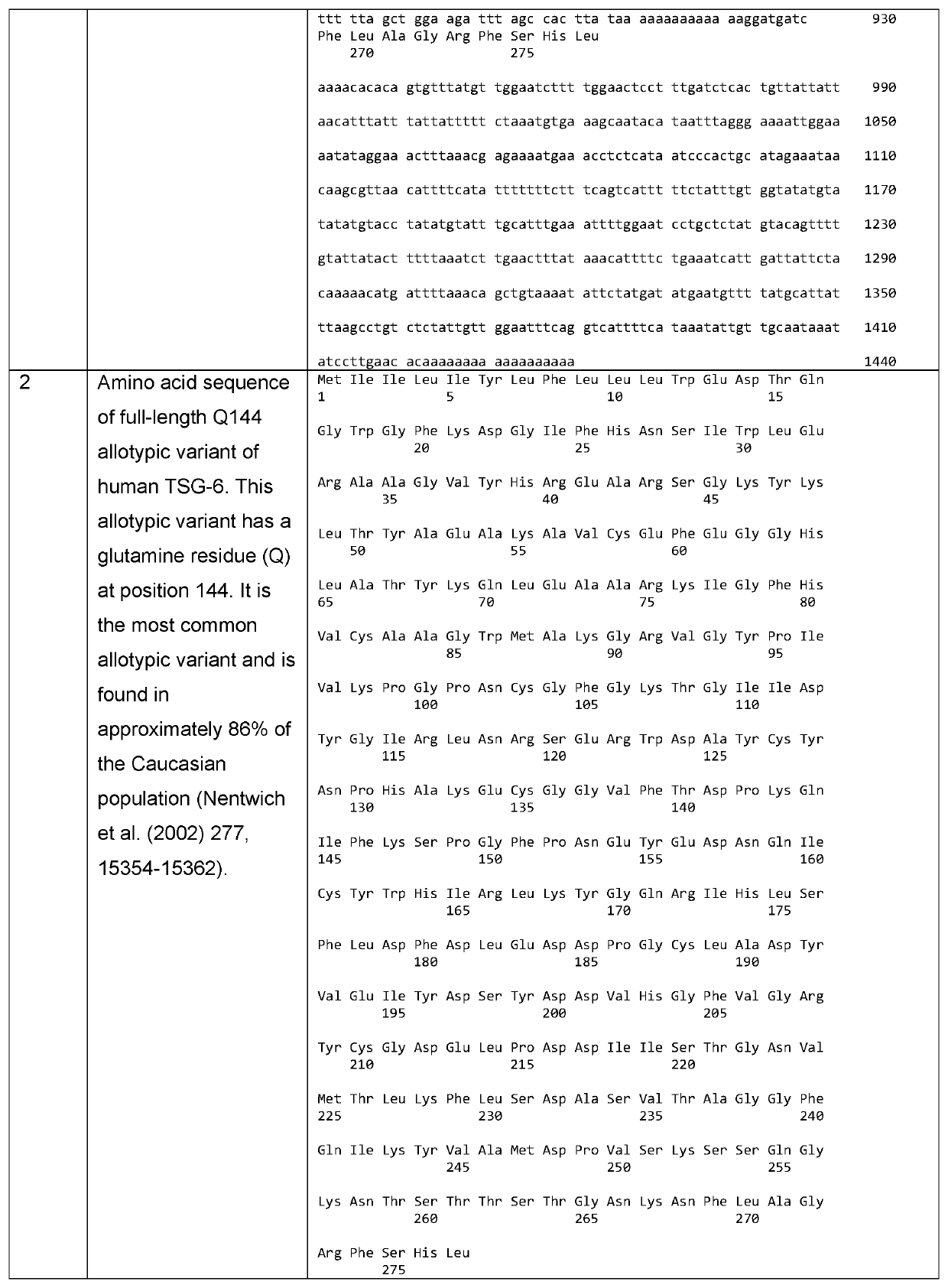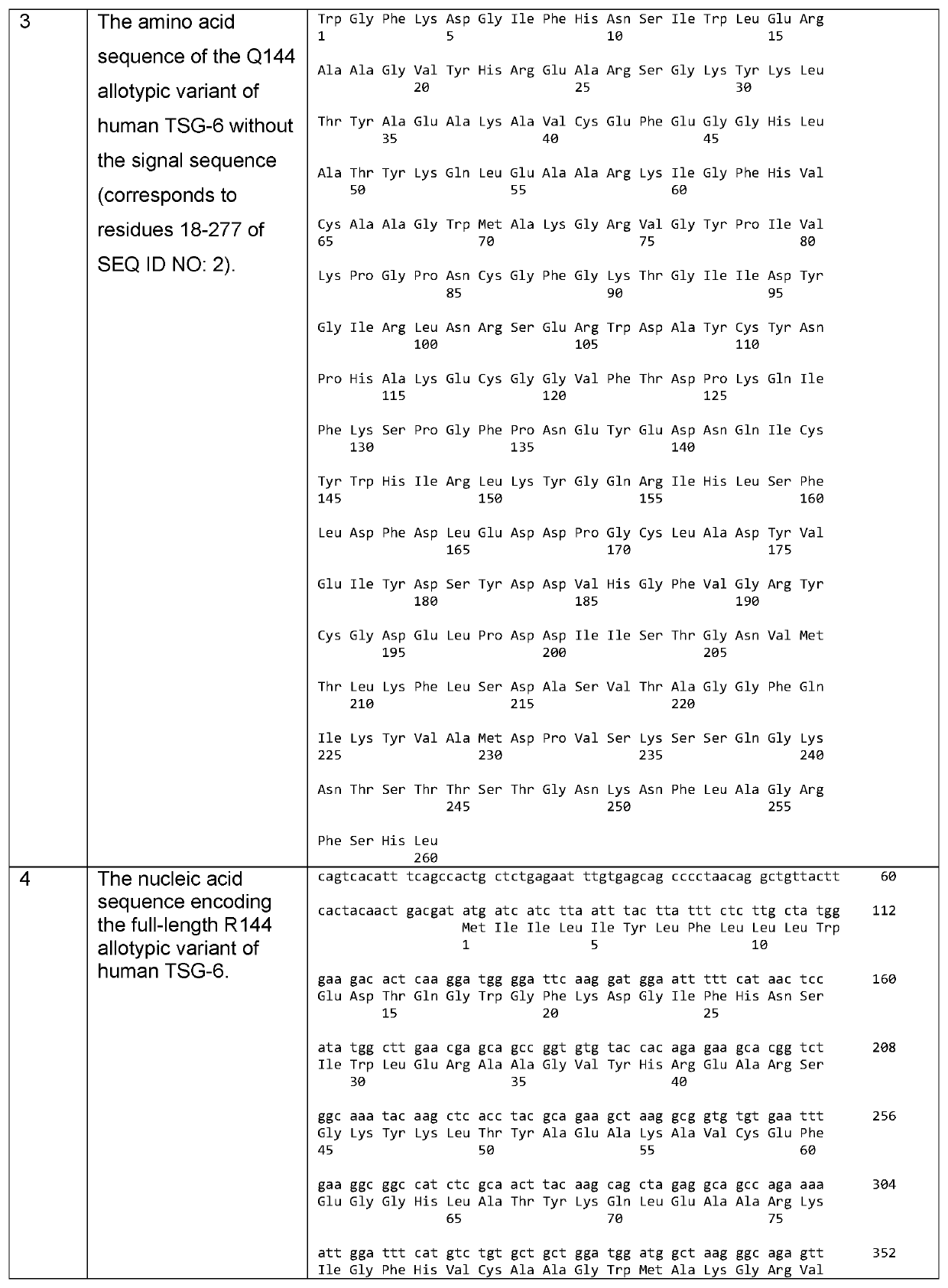Tsg6 polypeptide fragment for dry eye disease
a technology of tsg6 and polypeptide, which is applied in the field of treatment of dry eye disease, can solve the problems of limited clinical application of tsg-6
- Summary
- Abstract
- Description
- Claims
- Application Information
AI Technical Summary
Benefits of technology
Problems solved by technology
Method used
Image
Examples
example 1
is More Soluble than Full Length TSG-6
[0133]The solubility and aggregation state of full-length TSG-6 and LINK_TSG6 in PBS were compared using UV spectrophotometry and dynamic light scattering (DLS) at a range of concentrations. The LINK_TSG6 was fully soluble at 2 mg / ml and showed no aggregation at 0.4, 0.8, 1.6 or 3.2 mg / ml. The full-length protein had much lower solubility with less than 40% of the protein remaining in solution at 0.4, 0.8, 1.6. and 3.2 mg / ml. The full-length protein was also highly aggregated at 0.2, 0.4. 0.8, 1.6 and 3.2 mg / ml. The DLS measurements were out of range for full-length TSG-6 at 1.6 and 3.2 mg / ml, indicating that aggregates of greater than 25 million Da were being formed.
example 2
Improves Signs and Symptoms of Dry Eye Disease in a Mouse Model
[0134]Topical TSG-6 has previously been shown to be as effective in inflammation mediated dry eye disease as cyclosporine eye drops (Kim et al., 2016). To test whether the LINK_TSG6 polypeptide was useful in this indication we investigated its effects in the NOD.B10 mouse model of primary ocular Sjögren's syndrome (spontaneous dry eye disease without diabetes).
[0135]NOD.B10.H2b mice (12 week-old, Jackson Lab), a model for primary ocular Sjögren's syndrome (dry eye disease without diabetes) were treated with topically administered with LINK_TSG6 for 7 days. C57BL / 6 mice were used as a negative control, as they do not develop spontaneous dry eye.
[0136]Mice were treated by topical application of 1 μg LINK_TSG6, in 10 μl PBS, 4× per day (QID) for 7 days. Mice were anesthetised with an intraperitoneal injection of zolazepam-tiletamine (Zoletil®, Virbac, Carros, France), and either 10 μl LINK_TSG6 or PBS was administered using...
example 3
f LINK_TSG6 on Dry Eye Disease are Dose-Dependent
[0150]We were interested to understand whether the effects observed in example 1 were dose dependent. To this end, we applied 1, 0.1, or 0.01 μg of LINK_TSG6, in 5 μl PBS, topically QID for 7 days to 12 week old NOD.B10.H2b mice (Jackson Lab).
[0151]Mice were randomly assigned to the following treatment groups:[0152]1) Group 1 (Negative control): C57BL / 6 mice, 12-week old (n=6, 12 eyes) untreated[0153]2) Group 2 (Positive control): NOD.B10 (n=8, 8 eyes)+PBS 5 μl QID[0154]3) Group 3 (Experimental group): NOD.B10 (n=8, 8 eyes)+LINK_TSG6 1 μg (in 5 μl PBS) QID[0155]4) Group 4 (Experimental group): NOD.B10 (n=8, 8 eyes)+LINK_TSG6 0.1 μg QID[0156]5) Group 5 (Experimental group): NOD.B10 (n=8, 8 eyes)+LINK_TSG6 0.01 μg QID
[0157]The effect of the treatment was determined as per example 1.
[0158]As shown in FIG. 3A, corneal epithelial defects were quantified in lissamine green-stained corneas. LINK_TSG6 1 μg and 0.1 μg was effective in reducing...
PUM
| Property | Measurement | Unit |
|---|---|---|
| molecular mass | aaaaa | aaaaa |
| diameter | aaaaa | aaaaa |
| solubility | aaaaa | aaaaa |
Abstract
Description
Claims
Application Information
 Login to View More
Login to View More - R&D
- Intellectual Property
- Life Sciences
- Materials
- Tech Scout
- Unparalleled Data Quality
- Higher Quality Content
- 60% Fewer Hallucinations
Browse by: Latest US Patents, China's latest patents, Technical Efficacy Thesaurus, Application Domain, Technology Topic, Popular Technical Reports.
© 2025 PatSnap. All rights reserved.Legal|Privacy policy|Modern Slavery Act Transparency Statement|Sitemap|About US| Contact US: help@patsnap.com



